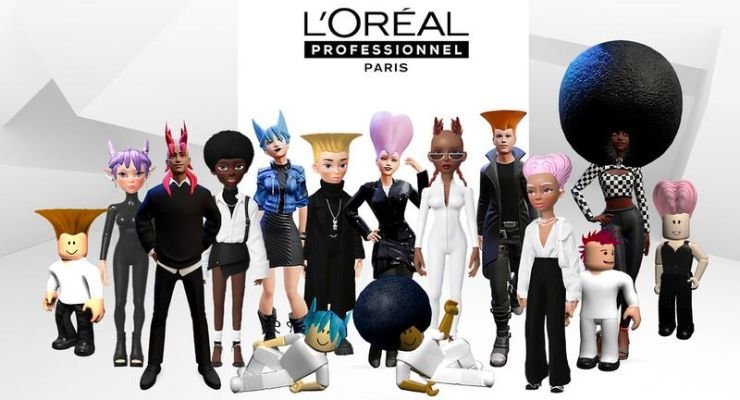Reshaping Digital Culture, Part 1: How Brands Can Unlock Gen Z Whitespace
(Part one of a four-part series)
This is the first article in our four-part series on ways that brands can leverage the opportunities at the intersection of demography and technology as Gen Z dominates culture and expands their use of digital well beyond social feeds.
In part one, we explore avatar customization as an entry point for brands to build cultural relevance and drive digital revenue.
Next: The rise of Immersive Experiences, Artificial Intelligence, and Community Collaborations.
Massive shifts are happening at the intersection of demography and technology creating a myriad of opportunities and threats for brands. Demographically, Gen Z have topped millennials as the largest generation on earth with an outsized influence on culture, impacting everything from fashion to family vacations.
From a technology perspective, this digital-first generation is transforming how they spend their 9 hours of daily screen time. Scrolling through social feeds is no longer enough to keep them captivated.
The Evolving Virtual Identity Opportunity
While self-expression is core to the human experience, it’s in our teens and twenties when we experiment with our identity most and explore who we want to be. Innovations in the avatar space are giving brands new ways to engage Gen Z beyond options like Snap’s Bitmojis which 85% of 13-24 year olds already own.
Roblox’s launch of layered clothing for its avatars for example, allows users to customize their looks much like they do in the real world and Gen Z can’t get enough. The platform tracked 165 billion avatar updates in the last year alone. Roblox recently expanded its secondary market capabilities with digital wearables called "Limiteds" allowing brands to earn 10% revenue in perpetuity each time a virtual look is re-sold on the platform.
While Meta has shifted away from the metaverse, the brand recently announced having reached 1 billion Meta Avatars that exist across Facebook, Instagram, and Messenger. Evolving from what started out as legless VR-only options, the new avatars include all their appendages and come in a variety of shapes and sizes to celebrate all body types. PUMA launched seven outfits to style these new inclusive options, joining other brands like Balenciaga, the NBA, and Thom Brown in the Meta Avatar store.
Opportunities for brands to help Gen Z digitally express themselves aren’t limited to fashion. Beauty brands like L’Oréal Professionnel are getting into the mix as well having recently launched five virtual hairstyles that can be worn across Roblox, Ready Player Me and Zepeto boosting visibility to 234 million players across 40 million virtual games.
This concept of “interoperability” represents the future of virtual goods, allowing users to explore many virtual worlds with one consistent identity. Ready Player Me is one of the leaders in the space providing this ability, unlike Roblox or Fortnite where digital items purchased there can only be used in that platform.
Building Loyalty by Blending Physical With Digital
Beyond virtual-only options, there is a growing shift towards the phygital frontier. Tommy Hilfiger for example launched a “Parallel Tommy Hilfiger” capsule in collaboration with Ready Player Me. The sold-out, limited edition drop included digital outfits that could be worn across hundreds of apps and games including virtual reality experiences in VR Chat. Post-purchase, customers could buy the matching physical counterpart from the Tommy website.
Balmain recently launched a phygital collaboration with the digital fashion platform Space Runners, transforming their celebrated Unicorn sneakers into digital wearables that can be worn in virtual worlds. In the “reverse-mint” process, consumers could purchase the physical Unicorn sneakers first from the Balmain website, then claim the digital versions later.
This is emblematic of a larger “Web 2.5” shift to simplify Web3’s intimidating process of minting an NFT through a digital wallet and paying with cryptocurrency. This is an approach brands should consider to more easily onboard consumers into the Web3 space and build a community of holders with no crypto required.
While our identity is one of our most fundamental human traits, extending it into alternate realities like games and virtual worlds is a clear opportunity for brands to build awareness with Gen Z. From a marketing perspective, the role of virtual goods is evolving to become more like branded accessories and fragrances that serve as entry points for young consumers to cost-effectively buy into the brand.
In the next article in this series on innovation opportunities at the intersection of demography and technology, we’ll explore how immersive experiences are creating new ways for brands to engage Gen Z, growing relationships and revenue in the process.
Qulture CEO/Founder Quynh Mai was recently interviewed by New York Times bestselling author MeiMei Fox, for Forbes about her five suggestions for how brands can engage with Web3 today. Read the full article on Forbes here.


